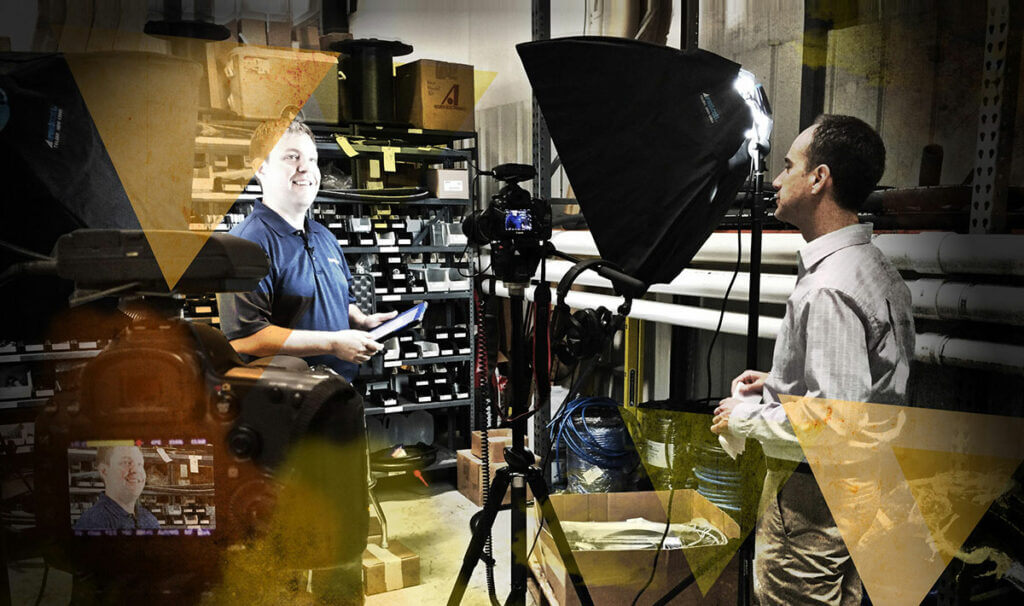Biggest Video Trends for 2017
Redefining the Video Landscape
Key takeaways
- 2016 was just the beginning of the online video surge
- More companies are dedicating marketing dollars to video
- Multi-platform video is the standard for success
- 360 and aerial videos are the shiny, new toys
 A little over a year ago, experts lauded 2016 as ‘the year of video marketing.’ But when you look at the trends toward the end of last year, it’s clear we only saw the opening credits.
A little over a year ago, experts lauded 2016 as ‘the year of video marketing.’ But when you look at the trends toward the end of last year, it’s clear we only saw the opening credits.
According to a study by Doubleshot Ltd., a UK-based filmmaking company, about 500 million Facebook users are watching an average of 100 million hours of video on their mobile devices every day. In one year, daily views skyrocketed from 1 billion to 8 billion. Those numbers are staggering, especially when you consider that Facebook is merely a single facet in the online video landscape.
A few years ago, having a YouTube channel regularly updated with content was considered ahead of the curve. But that was training wheels. Once YouTube became the second most used search engine on the internet (behind Google, of course) marketers realized the inherent value in utilizing video as much as possible. This led to companies integrating video into homepage design, budgeting marketing dollars to pre-roll YouTube ads (you know, the ones you skip after five seconds), and rolling out more product videos.
That last one is especially significant for companies that market products and services…so, all of them. This year, wyzowl reported that 44% of surveyed consumers preferred to watch a video when it comes to learning about a new product.
And the engagement doesn’t stop with consumers. With 75% of executives watching work videos on business websites at least once a week (Insivia), B2B video marketing holds just as many opportunities as B2C. Companies are responding by putting a greater emphasis on video marketing, and by 2019, U.S. companies are expected to spend more than $14 billion on video, nearly half of that being mobile video.
So, what should companies be paying attention to? And what video trends can we expect from 2017?
Videos will be watched on all devices
Getting it done with infotainment
 These days, entertaining your audience is just as important as informing them. While the ultimate goal is to inform viewers about your product/service and how they can benefit, if they don’t enjoy the video, they will likely click away.
These days, entertaining your audience is just as important as informing them. While the ultimate goal is to inform viewers about your product/service and how they can benefit, if they don’t enjoy the video, they will likely click away.
Think Squatty Potty. The commercial was risky, but there’s no denying the more than 29 million views on YouTube alone – more than 50 million when you include Facebook views. Even more impressive is that about 70% of those viewers watched the entire three-minute video. Of the views, about 25% were from paid promotion; the rest were organic.
More importantly, the company credits the viral video for a 600% increase in online sales and a 400% increase in sales at the Potty’s largest retail partner, Bed Bath & Beyond. In 2017, expect more people to turn to YouTube when researching brands and products.
More companies will show their story
 One of the first rules of writing is to show the story rather than tell it. The About Us section of a company’s website is its chance to connect to its audience and customers with its story, and an introductory video is becoming a very popular way to do that.
One of the first rules of writing is to show the story rather than tell it. The About Us section of a company’s website is its chance to connect to its audience and customers with its story, and an introductory video is becoming a very popular way to do that.
Video gives you and your employees an opportunity to put some personality on your website. As video is more often integrated into web design, we expect to see more companies wanting to show their customers who they are and what they do.
Of course, text on a website is important for SEO, so we don’t expect text to be completely replaced by video, but video will certainly be the hero of any company’s About Us page.
Going live to drive engagement

Live video streaming has taken off like a rocket. With platforms like Facebook Live, Periscope and Twitter giving users a way to broadcast live, companies are finding ways to leverage the capability for business.
Facebook has already identified that viewers watch live videos three times longer than saved videos. You can chalk that up to the urgency that live video creates – viewers know that they have one shot at watching the content in real time, so they make the effort to not miss it.
Live streaming can be utilized in so many ways for companies. If you’re a manufacturer, show people how a part is being made, or how your customer can perform maintenance on your product. Work in an office? Take people on a tour and introduce them to your staff. Speaking at a trade show? Stream it in real time for customers who aren’t able to attend.
Get new angles with aerial and 360° video
A majority of customers say product videos help them when making purchasing decisions. So, what better way to introduce them to your product/service than by making them feel they’re seeing it ‘in person’? Recent reports show that aerial and 360° videos draws more viewers than standard video, and more viewers watch the videos to completion.
Use aerial video to show customers the extent of your manufacturing facility, or to do a fly-by of your golf course and resort, without having to hire a helicopter and pilot. Create a 360° video to put customers in the driver’s seat, like Ford did in a Mustang V8.
Final thought
As we move into 2017, all signs point to increased relevancy of video in marketing plans. And with digital advertising platforms like Facebook, Google and YouTube increasing their targeting capabilities, having dynamic, engaging, targeted video content will be ever more important.
Our Recent Posts
Search
Posts by Tag
- Digital Marketing (77)
- Marketing Strategy (69)
- Agency (55)
- Content Marketing (31)
- Social Media Marketing (29)
- SEO (28)
- News (26)
- Advertising (24)
- Website Design (15)
- branding (14)
- Graphic Design (10)
- AI (4)
- HubSpot (2)
- Web Development (2)
- Business (1)
- Marketing Strategies (1)
- Mobile & Web (1)
- PR (1)
- Professional Development (1)
- SEM (1)
- Sales and Marketing (1)
Explore our suite of services and how they can enhance your business. Contact us today to learn more!
